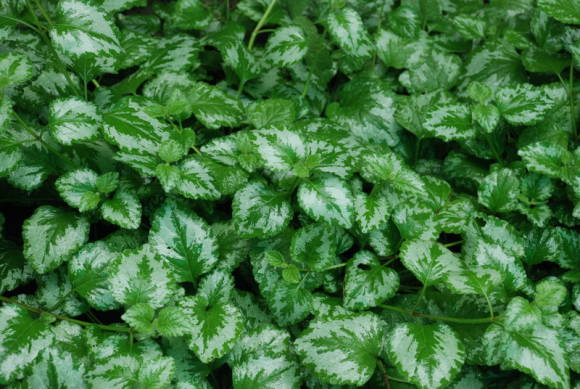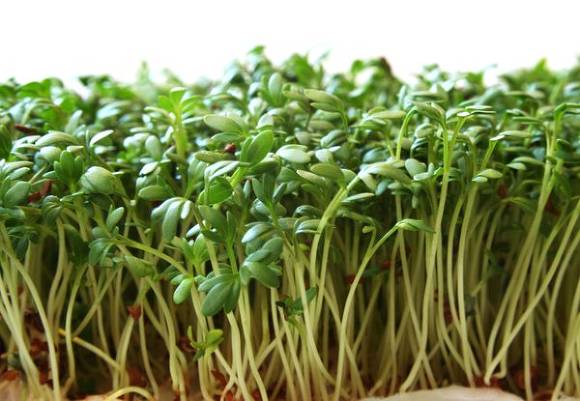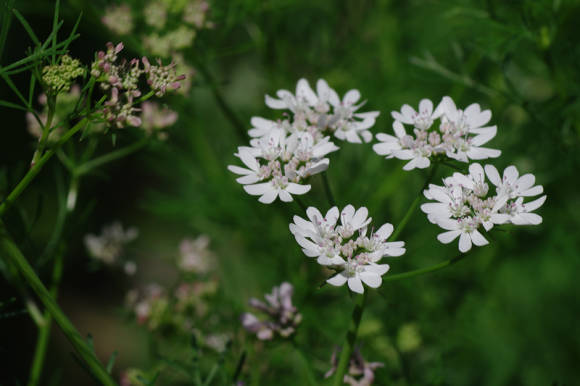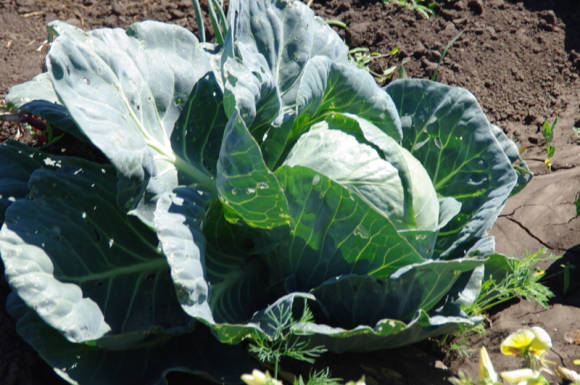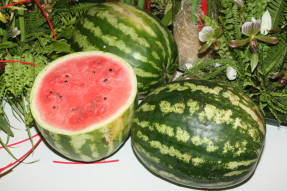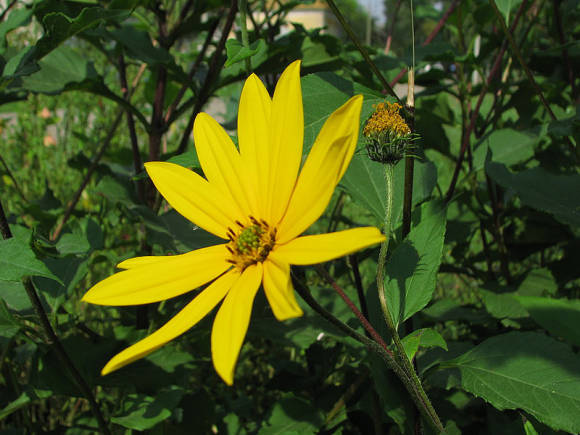Rosemary is native to the western Mediterranean. It is cultivated all over the world: in Italy, France, Spain, Asia Minor, USA (Florida). Rosemary is grown on the southern coast of Crimea, the Black Sea coast of the Caucasus, Azerbaijan and Central Asia. But this does not mean at all that it cannot be grown here. True, he will have to spend the winter in a cool room on a windowsill or in a winter garden on a glazed loggia. But some of the added difficulties of growing will pay off with its usefulness.
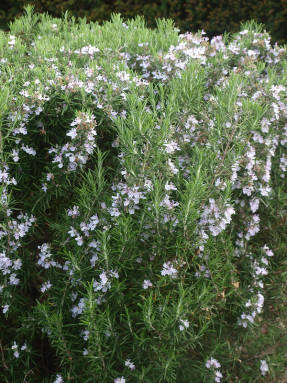 |
Rosemary - one of the oldest medicinal plants used for food, as well as for treatment and rituals. The Romans called it "the dew of the sea", and among the ancient Greeks it was dedicated to the goddess Aphrodite. For many peoples, rosemary was considered a sacred plant. In ancient Greece, dry rosemary shoots were burned in temples as incense. Students of Greece and Ancient Rome wore rosemary wreaths to heighten memory, and Roman gladiators wore a symbol of victory. In the Middle Ages, it was believed that he drives away evil spirits and can save from the plague. So, in the XIV century, healers recommended spraying rosemary essential oil in rooms where there were seriously ill patients, and during epidemics. They believed that the scent of rosemary attracts good spirits that can protect and heal people. To protect against infectious diseases, it was burned in smoking rooms and carried with them in the form of bouquets during epidemics. In the 16th century, rosemary was believed to bring back youth.
Medicinal rosemary (Rosmarinusofficinalis L.) is an evergreen, densely leafy shrub up to 1-1.5 m high, belongs to the Lamb family (Lamiaceae).
The root system of rosemary is powerful, highly developed, penetrates the soil to a depth of 3-4 m. But in culture, as a rule, plants are grown from cuttings, and they have an adventitious root system without a pronounced main root. Perennial shoots are dark gray, woody, with peeling bark, annuals are light gray, pubescent. Leaves are linear, opposite, sessile, leathery, with edges curved downward. The upper side of the leaves is dark or light green, shiny, the lower side is pubescent. The flowers are small, collected in dense paniculate inflorescences, in some forms they are dark purple, in others they are light purple or white. Seeds are brown, small. Rosemary is drought-resistant, demanding of light and sensitive to frost. Young plants freeze at a temperature of -5 ...- 7 ° C, adults are more resistant to low temperatures, but in the conditions of Central Russia they do not hibernate in open ground. Practically not affected by pests and diseases. In our conditions, it is better to grow rosemary in a pot culture, exposing it to the street for the summer, and with the onset of stable cold weather, bring it into a cool, bright room, where the temperature is maintained at + 10-15 ° C. At higher winter temperatures, rosemary loses its dormant period and begins to "stretch". In winter, they reduce watering and stop feeding it. High temperature combined with low humidity is a serious problem when growing on windowsills. Therefore, the plants are sprayed with water 1-2 times daily. The plant can be propagated by seeds, cuttings and layering. In Crimea, where rosemary is grown as an essential oil plant, it is propagated by winter cuttings, which are cut in late autumn and planted in greenhouses, and young seedlings are obtained by spring. For our conditions, this method is unsuitable, so it is better to use green cuttings. They are cut during the period of intensive growth of shoots (June-early July) 8-10 cm long with three to four internodes and immediately planted in sand or a mixture of sand and peat, covered with foil or glass and placed in a shaded place. You can buy fresh rosemary sprigs from the vegetable section of your supermarket.It is necessary to spray the cuttings from a spray bottle with water several times a day so that there is dew on the leaves all the time. With excessive moisture in the substrate, they begin to rot. Rosemary takes root after 3-4 weeks. If there are several cuttings, then try rooting a few of them in a glass of water. Usually 50-60% of cuttings are rooted. But the hassle with such rooting is less. Young rooted plants are planted in pots with a diameter of 15 cm.When planting, you can put broken eggshells on the bottom of the pot, or better, crushed or ground eggshells - rosemary loves calcium very much. The soil mixture should have a slightly acidic or neutral reaction of the medium. Young rosemary are fed several times a season with a full complex mineral fertilizer. Watering should be moderate, but don't overdry the soil! If the plants grow loose, then there is a high probability that they will die. With further transplants (it is better to do transshipments without shaking off the soil from the roots), it is advisable not to violate the integrity of the coma, otherwise the plants get sick and do not start growing for a long time. After the transshipment, which is carried out in March-April, the rosemary is pruned, fed and watered more abundantly. At the end of April, the pots are put out on the street. In case of severe frosts, they should be brought into the room or covered with foil. In August, rosemary blooms and it is time to harvest. During this period, the plants contain the maximum amount of essential oil. Shoots are cut and dried in a well-ventilated area, but not in the sun or in a hot dryer. After that, the leaves can be separated, because they are the spice for the kitchen and the medicine for the first aid kit. It is advisable not to store dry rosemary for a long time, but to harvest fresh rosemary every year. In a small amount, rosemary is added to fruit salads; this plant goes well with dishes of beans, peas, eggplants, white cabbage, red cabbage and cauliflower. But mostly it is put in hot meat and poultry dishes. A small amount of dried rosemary leaves are mixed with parsley and ground with butter. The resulting paste is placed in small portions inside the carcass of chicken, turkey, duck, goose. It gives a unique aroma to satsivi, tomato and dogwood sauces. It can even be added to tea. But this is not for everybody. Rosemary leaf contains 0.5% alkaloids (rosemary), the bitter substance picrosalvin (1.2%), up to 8% tannins, flavones, sterols (b-sitosterol), amirin, betulin, choline, resinous substances, waxes, nicotinamide, nicotinic, ursolic, glycolic, caffeic and rosmarinic acids. It is rosmarinic acid that has been of great interest to doctors in recent years as an effective antioxidant. Rosemary leaves contain about 2.5% essential oil. With the outward "similarity of plants", the component composition of rosemary essential oil differs greatly depending on the origin. Aromatherapists always pay great attention to this point and use these oils in different ways. According to its component composition, rosemary essential oil can be divided into the following types: Camphortype of tones muscles, eliminates lethargy and weakness. It is suitable for muscle pain, for cramps, muscle tension during intense sports. Sometimes it is recommended to rub the joints for rheumatism. When taken orally, this type of oil has a choleretic effect. Cineol type has an antiseptic and antibacterial effect. Therefore, it is most suitable for colds. It is used in the form of inhalation for catarrhal symptoms. Verbenone type has a regenerating effect on the skin, improves digestion, and loosens mucus. It is an invaluable oil in skin care products.In the form of inhalation, it can be used for coughing as an expectorant. Infusion of rosemary shoots is used for headaches, colds, gastrointestinal diseases, as a diuretic. The leaves are used to prepare smoking drugs that are used for asthma. Rosemary is a good tonic. It has a beneficial effect on low blood pressure, general wasting and sexual weakness. The plant is recommended for use in dietary nutrition for diabetes, diseases of the liver, gallbladder, vascular system, myocardial infarction. In folk medicine, rosemary ointments are used for neuralgic and rheumatic pains. The tonic effect of rosemary has been established after serious illnesses, especially in the elderly with cerebrovascular accidents. For this purpose, an infusion of rosemary is used: 1 teaspoon of leaves is poured with 2 cups of boiling water, insisted for 30 minutes in a sealed container, filtered. Take 1 - 2 tablespoons 3 times daily before meals. Mixed with lavender, it is recommended to normalize blood pressure after a stroke. In folk medicine, rosemary preparations are used as a tonic for neuroses, loss of strength, physical and mental fatigue. At amblyopia (decrease in visual acuity in the absence of visible disturbances) take a handful of leaves and young sprigs of rosemary, insist for two days in 1 liter of dry white wine, strain and drink a tablespoon before meals. Atacute inflammation of the joints take 3 tablespoons of rosemary leaves and white willow bark, pour 1 liter of boiling water, leave for 2 hours, drink this amount during the day. Atoverweight take equally the herb of wormwood, the leaves of sage and rosemary, thorn flowers. Pour 3 teaspoons of the mixture with 0.5 liters of boiling water, leave for 5 minutes and drink 150 ml 3 times a day. Infusions of leaves are used for violations of the cycle in women, nervous disorders in the climacteric period, neurosis of the heart, loss of strength. In folk medicine, rosemary infusion is used for asthma and bronchitis. Ointments, compresses and leaf baths are used for joint diseases (arthritis and gout). Rosemary and its essential oil are widely used in cosmetics. The easiest way is to add 3-4 drops of rosemary essential oil to a cream containing a minimum of all kinds of active ingredients. In addition to the antiseptic effect, this wonderful plant has the property of toning and restoring elasticity to the skin. Here's an example of a lotion for aging skin: 3 parts chamomile flowers, 2 parts peppermint, 1 part rosemary, 2 parts salicylic acid. The mixture is placed in a vessel, 1 liter of white wine is poured, infused for 2 weeks, then filtered, 5-7 drops of rosemary oil are added. Lotion is rubbed over the face every evening for 15 days. With bags under the eyes, 2 tablespoons of leaves and 0.3 liters of boiling water should be infused for 1 hour and used in the form of warm compresses. As a tonic for the skin with a cotton swab dipped in this infusion, wipe the skin of the face in the morning and evening, especially after labor exploits in front of the computer. Rosemary essential oil has antioxidant, diuretic, hypotensive and choleretic effects. It should be noted its strong influence on the human psyche. Aromatherapists note that aromatizing the air with rosemary oil or a mixture of essential oils based on rosemary improves memory, helps people who have partially lost their sense of smell, people with poor concentration.
Reproduction
Planting and leaving

A lover of Mediterranean cuisine
 What's useful in it
What's useful in it

